
Roots
Consider for a moment the very strands that crown us, each helix a living archive. From the deepest ancestral wellspring, a wisdom flows, whispering of the earth’s bounty and hands that knew its secrets. For textured hair, a unique creation of nature’s artistry, the conversation with oils has always been profound, a relationship woven into the very fabric of heritage.
Our hair, with its remarkable curl and coil, possesses a specific thirst, a longing for replenishment that traditional methods understood with an intuitive brilliance. These practices were never mere beautification; they comprised a living language, spoken through careful touch and the thoughtful selection of botanicals, each element a testament to generations of observation and care.
The traditional approaches to meeting textured hair’s unique oil needs stem from a fundamental understanding of its biology, an understanding honed over millennia long before modern science articulated the lipid barrier or hydrophobicity. Across continents and through ages, communities developed intricate systems of care, recognizing that the very structure of curly and coily hair, with its often elliptical shape and propensity for lifted cuticles, meant sebum – our body’s natural conditioning oil – navigated a more circuitous path from scalp to tip. This inherent characteristic meant that ancestral care traditions centered on proactive replenishment, on providing external nourishment that mimicked or supplemented nature’s own design.
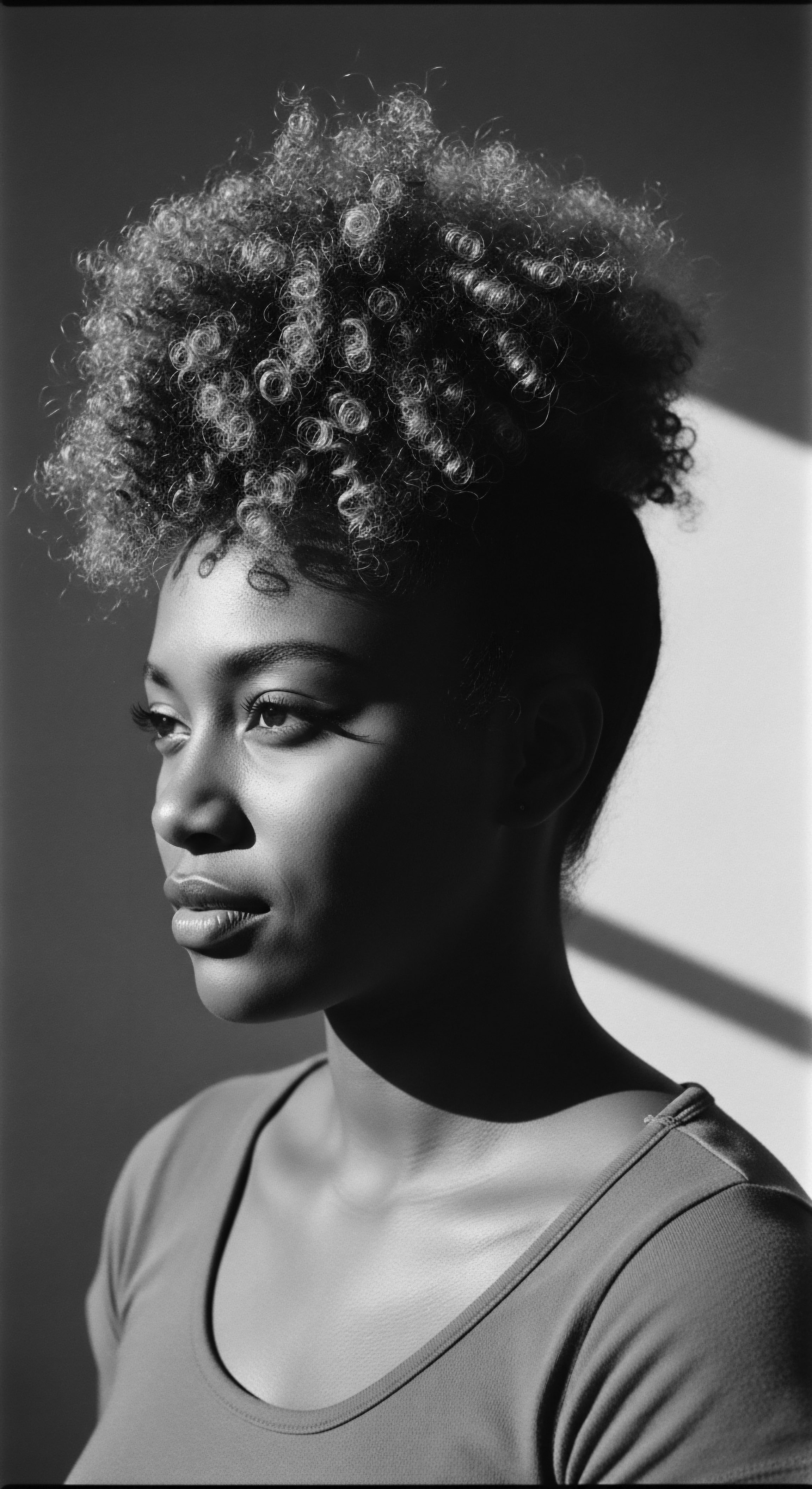
Hair’s Structure and Ancestral Insight
The architecture of textured hair, so varied in its coils, kinks, and waves, presents inherent characteristics influencing its moisture dynamics. Unlike straight hair, where natural oils might descend easily along a smooth, cylindrical shaft, the intricate twists and turns of coily strands create pathways less conducive to swift oil distribution. This distinct morphology, quite naturally, leads to a hair type that leans towards dryness, particularly at the mid-shaft and ends.
Ancestors possessed no electron microscopes, yet their deep observation yielded practices that spoke directly to this biological reality. They recognized, through lived experience, the need for regular external lubrication to maintain suppleness and guard against breakage.
The ancestral wisdom saw hair not as an isolated entity but as part of the whole, deeply connected to environment and spirit. The sun, the winds, the daily rhythm of life – all impacted the hair, demanding care that was both consistent and responsive. The oils chosen, whether extracted from local flora or acquired through trade, possessed properties that addressed this delicate balance. They were not just topical applications; they served as protective shrouds, sealing agents, and emollients all in one, forming a barrier against the elements and retaining precious moisture within the hair shaft.
Traditional methods for textured hair’s oil needs reflect an ancient understanding of its unique structure and environmental interaction.
Consider the meticulous classification systems that developed within various cultural groups, systems that might seem informal to a Western eye but were profoundly practical. Hair types were often recognized not just by curl pattern but by how they absorbed and retained moisture, how they responded to certain oils, and even their tactile feel. This nuanced perception guided the selection of specific plant-derived oils, each with its unique fatty acid profile, its distinct viscosity, and its particular benefit to the hair and scalp.
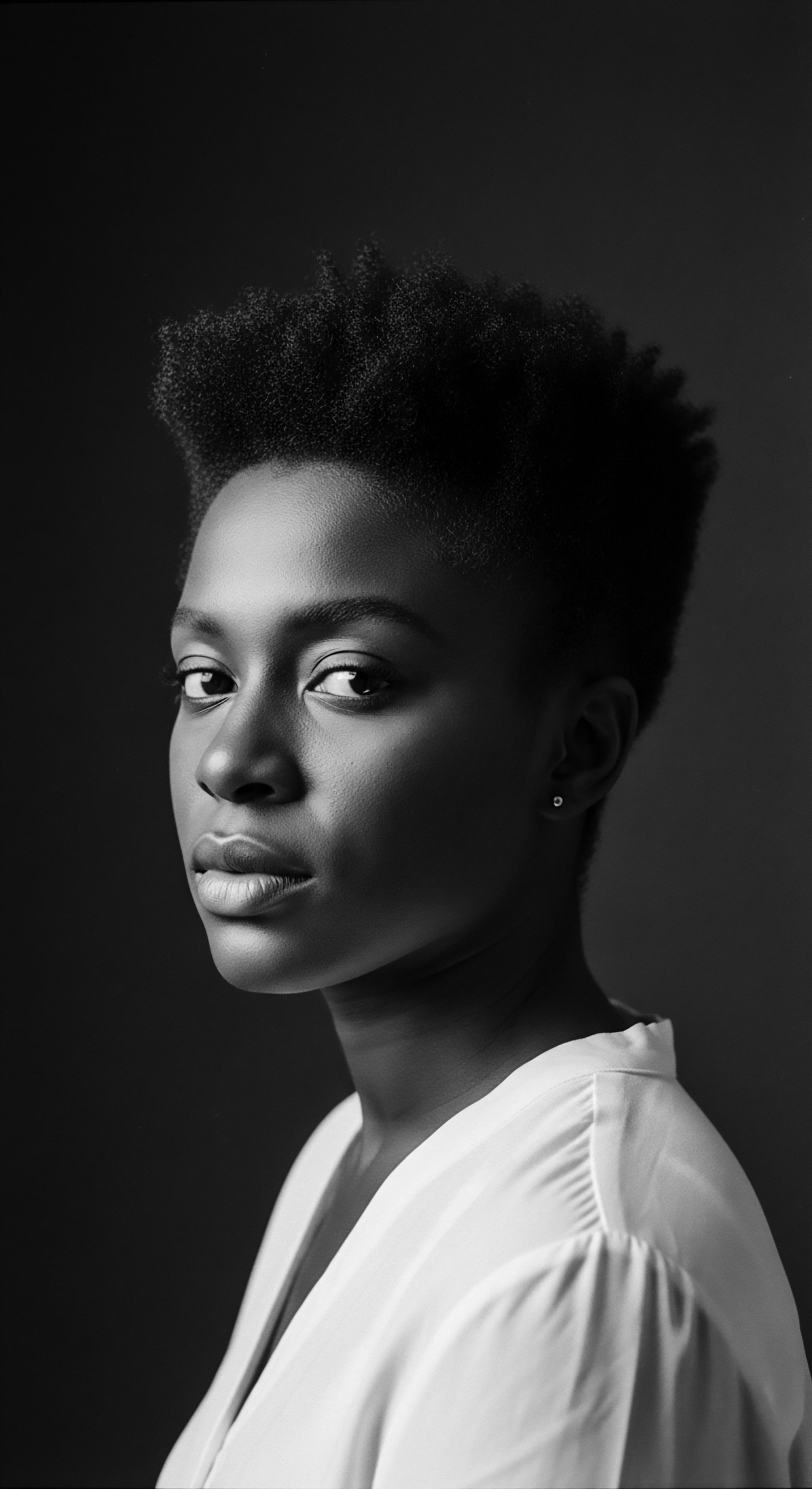
The Language of Hair
Across African and diasporic cultures, a rich lexicon arose to describe hair and its care, often reflecting deep cultural meanings beyond simple aesthetics. Terms for curl patterns, textures, and even specific states of hair health were intertwined with identity and social status.
- Kinky Hair ❉ Often refers to tightly coiled strands, sometimes forming zig-zag patterns, known for their volume and dryness.
- Coily Hair ❉ Denotes spring-like coils, dense and often requiring considerable moisture.
- Nappy ❉ A term reappropriated by many to speak to the inherent beauty and resilience of tightly textured hair, historically used pejoratively.
These terms, while sometimes reductive in modern contexts, represented an ancestral attempt to categorize and understand hair’s diverse needs, including how different hair types would receive and benefit from various oil applications. The wisdom was passed down, not through textbooks, but through the rhythm of daily rituals, mother to daughter, elder to youth, in a living tradition that continuously adapted and refined itself.
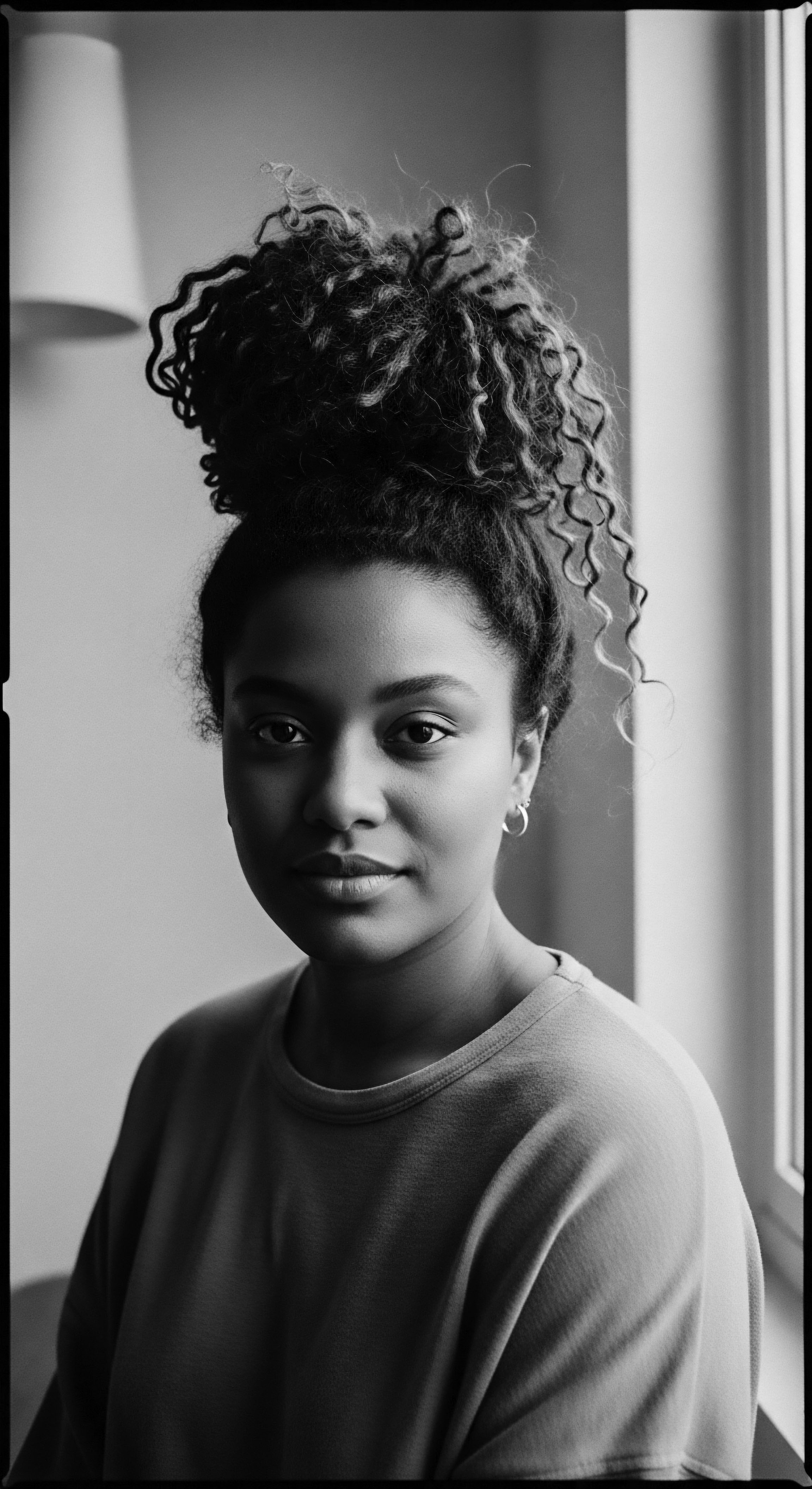
Seasonal Shifts and Nourishment
Hair growth cycles, influenced by nutrition, environment, and even stress, were implicitly understood by traditional practitioners. They recognized that hair’s needs were not static, but shifted with the seasons, with age, and with life’s passages. Dry seasons demanded richer, more occlusive oils, while humid periods might call for lighter formulations.
Pregnancy or illness could alter hair’s condition, prompting a change in oil choices and application frequency. This adaptive approach, deeply rooted in a holistic view of wellbeing, contrasts sharply with modern, often rigid, product regimens.
The essential lexicon of textured hair care, in its oldest forms, included words for the various tools and containers, the processes of oil extraction, and the gestures of application. A mortar and pestle for grinding nuts, specific gourds for storage, the gentle sweep of fingers applying warmth-activated oils – each played a part in a symphony of care. This deep understanding of hair’s foundational requirements, informed by heritage, created a framework where oiling was not an add-on, but a fundamental element of preservation and vitality.

Ritual
The application of oils to textured hair, far from being a mundane task, evolved into a series of profound rituals, each gesture imbued with purpose and ancestral wisdom. These practices shaped not only the physical appearance of hair but also its cultural significance, serving as expressions of identity, protection, and community connection. The rhythmic motions of applying a warmed oil, the careful sectioning of hair, the communal spaces where these rituals unfolded – all contributed to a deep, living heritage of care.
Within diverse African and diasporic communities, traditional styling methods were often inseparable from oiling practices. Protective styles, which are central to the heritage of textured hair care, relied heavily on oils to seal in moisture, reduce friction, and promote length retention. Braiding, twisting, and knotting techniques, some dating back millennia, would typically commence only after the hair and scalp had been thoroughly prepared with a carefully chosen blend of natural oils. This preparation was not merely a pre-treatment; it was foundational to the style’s longevity and the hair’s overall health during its protected state.

Anointing the Strands
The very act of oiling was often an anointing, a blessing. In many West African societies, for example, shea butter (karité) was a revered substance, not just for its emollient properties but for its spiritual significance. Women would melt the golden butter, sometimes infusing it with local herbs, and apply it with deliberate strokes, massaging it into the scalp and down the hair shaft.
This practice facilitated circulation, relieved dryness, and provided a protective coating for the hair. This method, passed matrilineally, exemplified a holistic approach where physical care intertwined with spiritual and communal wellness.
Consider the historical continuum ❉ from ancient Nubian practices of incorporating castor oil and animal fats with ochre for hair adornment and protection against the harsh desert sun, to the meticulous hair-oiling ceremonies observed in various Southern African cultures for rite-of-passage rituals. In these contexts, oils were not just for lubrication; they were part of a cosmetic language, signifying status, marital availability, or readiness for a new life stage. The choice of oil, its fragrance, and even the method of application carried layers of social meaning.
Traditional oiling was a multifaceted ritual, blending physical hair care with deep cultural expression.
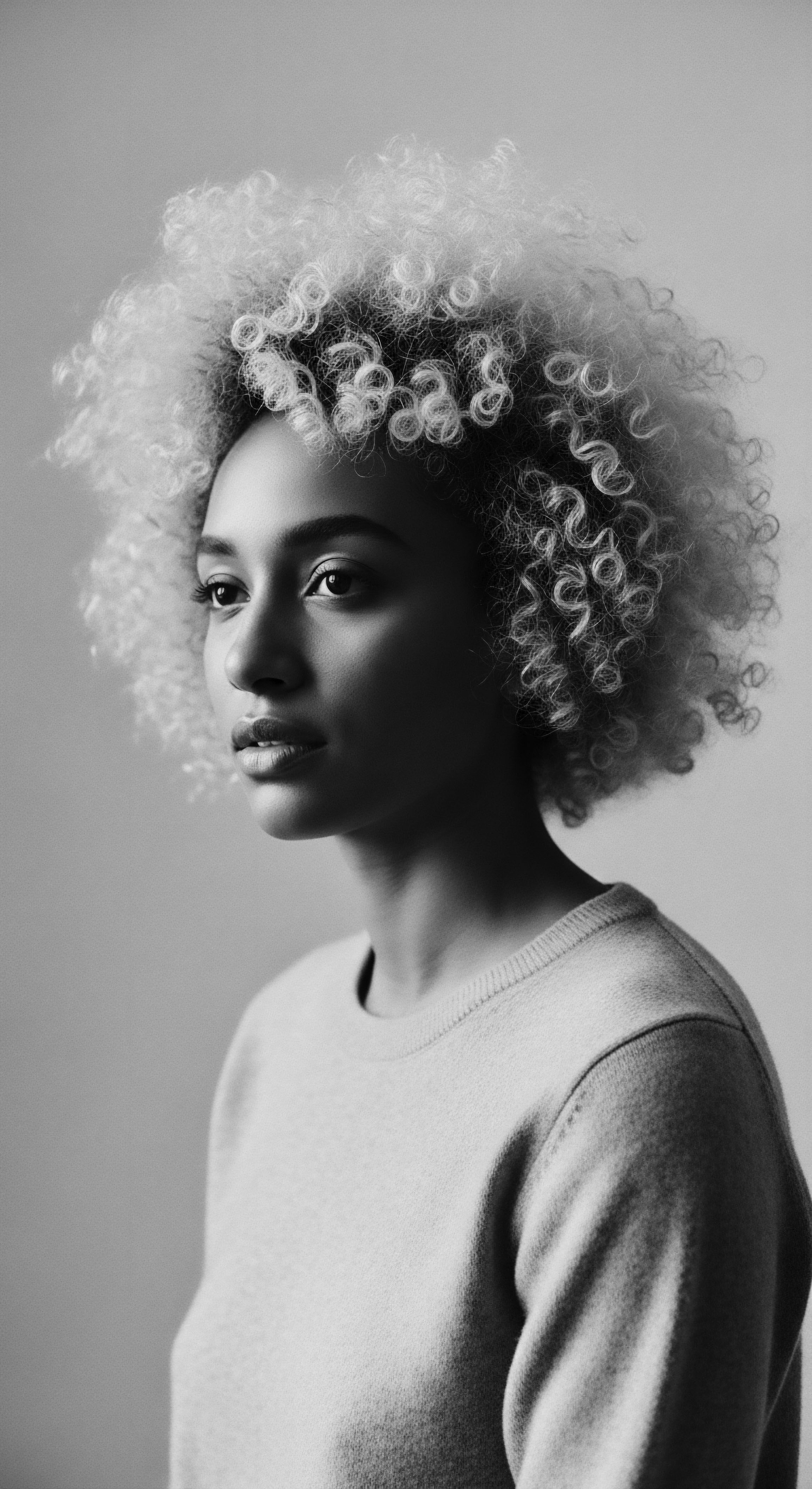
Traditional Styling and Oil’s Role
The synergy between traditional oiling and styling methods is a cornerstone of textured hair heritage.
| Traditional Styling Practice Braiding (e.g. Cornrows, Box Braids) |
| Role of Oils Oils were applied to the scalp and hair before braiding to lubricate strands, reduce tension, and prevent breakage. They also helped seal in moisture within the protective style. |
| Traditional Styling Practice Twisting (e.g. Two-Strand Twists, Bantu Knots) |
| Role of Oils Used to define curl patterns and minimize frizz. Oils provided slip for easier manipulation and acted as a sealant to hold moisture within the twist, contributing to definition and shine. |
| Traditional Styling Practice Loc Grooming |
| Role of Oils Traditionally, various plant-based oils (like coconut or olive oil) and herbal infusions were used to keep locs moisturized, prevent dryness, and promote healthy growth, often massaged into the scalp between retwists. |
| Traditional Styling Practice The enduring presence of oils within these practices underscores their central importance to hair health and aesthetic. |
In the Caribbean, for instance, women often employed castor oil, particularly Black castor oil, renowned for its density and perceived ability to fortify strands and stimulate scalp circulation. This oil would be warmed, sometimes over low heat, and then massaged into the scalp with firm, circular motions before the hair was put into protective styles such as plaits or wraps. The warmth allowed for better penetration, and the massage stimulated the sebaceous glands and blood flow, promoting scalp health which, in turn, supported healthy hair growth. This practice speaks to a profound understanding of scalp as soil, requiring careful tending for its harvest.

Tools of Tradition and Oil Application
The tools used in traditional hair care rituals were simple, yet perfectly suited to their purpose, working in concert with the oils. Fingers, of course, were the primary implements, allowing for sensitive distribution and scalp massage. But other objects played their part:
- Wooden Combs ❉ Often wide-toothed, crafted from local woods, used to gently distribute oils through the hair, preventing snagging or breakage.
- Gourds and Pottery ❉ Vessels for warming and storing oils, maintaining their purity and potency.
- Herbal Pouches ❉ Sometimes used to infuse oils with the beneficial properties of medicinal plants through gentle heating.
These tools were extensions of the hands, facilitating the even spread of nutrient-rich oils from root to tip, ensuring every part of the strand received its due. The process was often slow, deliberate, a meditation that honored the hair and the person. The concept of “sealing” moisture, a common modern term, finds its ancient parallel in practices of layering oils over water or water-based herbal infusions to lock in hydration. The oils, therefore, acted as a protective envelope.
Even the historical uses of extensions and wigs, particularly prevalent in ancient Egypt, reveal an understanding of oil’s preserving power. Wigs were not merely cosmetic; they shielded the scalp and natural hair from the sun, and the hair used in their construction was often oiled to maintain its suppleness and integrity. These ancient applications underscore a continuous thread of protective care, recognizing hair as a delicate fiber needing consistent, thoughtful nourishment. The tradition continues, echoes resounding in contemporary practices that champion protective styles and moisture retention for textured hair.

Relay
The enduring vitality of textured hair care traditions is perhaps best seen in their continuity, their steady ‘relay’ through generations, adapting yet retaining their core wisdom. This is where ancestral knowledge meets modern understanding, revealing how the deep care rituals of the past provide profound insights into contemporary holistic wellness for hair. The traditional methods for supporting textured hair’s unique oil needs were not static; they were living systems, responsive to environmental shifts, cultural exchange, and the needs of communities, always grounded in a profound respect for the strand itself.
To truly grasp the legacy of these practices, one must consider the interconnectedness of scalp health, hair resilience, and overall wellbeing, a concept deeply ingrained in ancestral philosophies. Oil was not simply for the strands; it was a primary medium for scalp treatments, recognized as the fertile ground from which healthy hair emerges. A dry, compromised scalp impacts hair growth and strength, a truth understood intuitively by those who massaged nutrient-rich oils into the scalp with practiced hands.
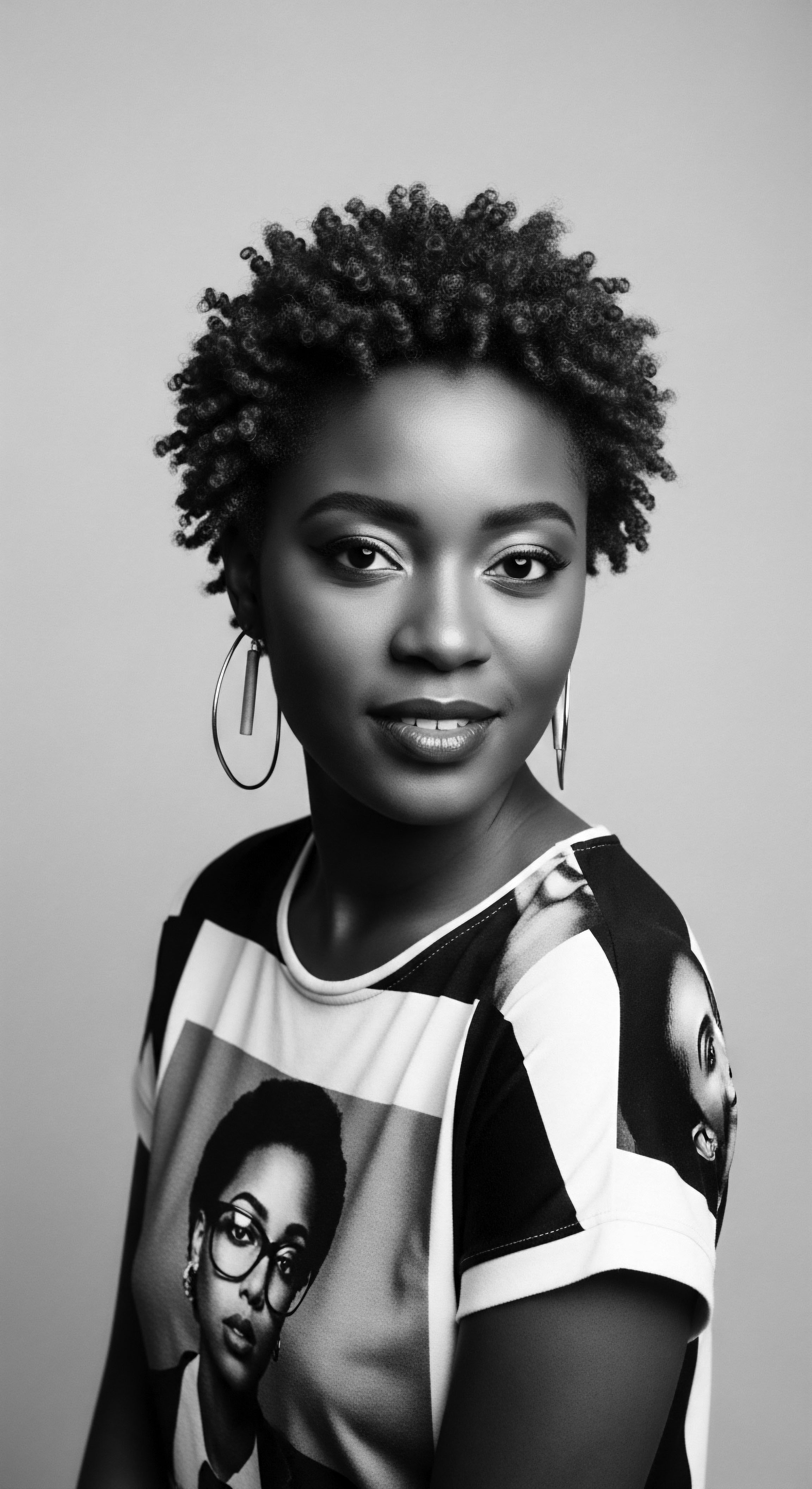
Building Personalized Regimens From Ancestral Patterns
The notion of a personalized regimen, so popular in contemporary discourse, has ancient roots. Ancestral care was inherently individualized, tailored to the unique hair of each person, their local environment, and available resources. There was no one-size-fits-all approach.
A mother knew her child’s hair, an elder their community’s hair, and adapted practices accordingly. This bespoke approach meant a dynamic interplay of oil choices, application frequencies, and complementary herbal treatments.
For instance, consider the practice of scalp oiling in various West African nations, a ritual often observed daily or several times a week. The specific oil chosen might vary significantly ❉ in Ghana, shea butter from the northern regions; in Nigeria, perhaps palm kernel oil; along the coast, coconut oil might be more prevalent. These choices were often dictated by local availability, but also by centuries of communal testing and observation of their efficacy.
Ancestral hair care was a dynamic, personalized system, adapting to individual needs and local resources.
A compelling illustration of ancestral wisdom’s scientific grounding can be seen in the use of certain indigenous oils. A study by the University of Buea in Cameroon, for instance, examined the traditional use of Canarium schweinfurthii (African pear) oil, locally known as ‘Atanga oil,’ for hair and skin care. Researchers found that this traditionally used oil contains significant levels of fatty acids, including oleic and linoleic acids, which are crucial for maintaining skin barrier function and providing emollient properties, validating its ancestral application for nourishing skin and hair.
(Ndibi, 2017). This kind of research allows modern science to confirm the efficacy of practices developed through centuries of empirical observation, strengthening the authority of heritage-based knowledge.

The Nighttime Sanctuary ❉ Heritage of Protection
The nighttime sanctuary for hair, particularly the practice of covering textured hair before sleep, is a tradition with deep historical roots, its purpose intrinsically linked to oil preservation. Before the advent of silk bonnets, headwraps and specific sleeping arrangements protected intricate hairstyles and maintained moisture balance.
The fundamental issue addressed was friction. Cotton pillowcases, absorbent by nature, draw moisture from the hair, leading to dryness, frizz, and breakage. Ancestors, without knowing the precise molecular interaction, understood the visible consequences. Covering hair, often with soft fabrics or woven materials, provided a barrier, preserving the precious oils applied during the day or evening.
This practice ensured that the hair’s natural moisture, augmented by traditional oil treatments, remained within the strands, allowing them to remain supple and protected through the night. The modern silk or satin bonnet, therefore, is a contemporary iteration of a very ancient, very wise practice of hair preservation.
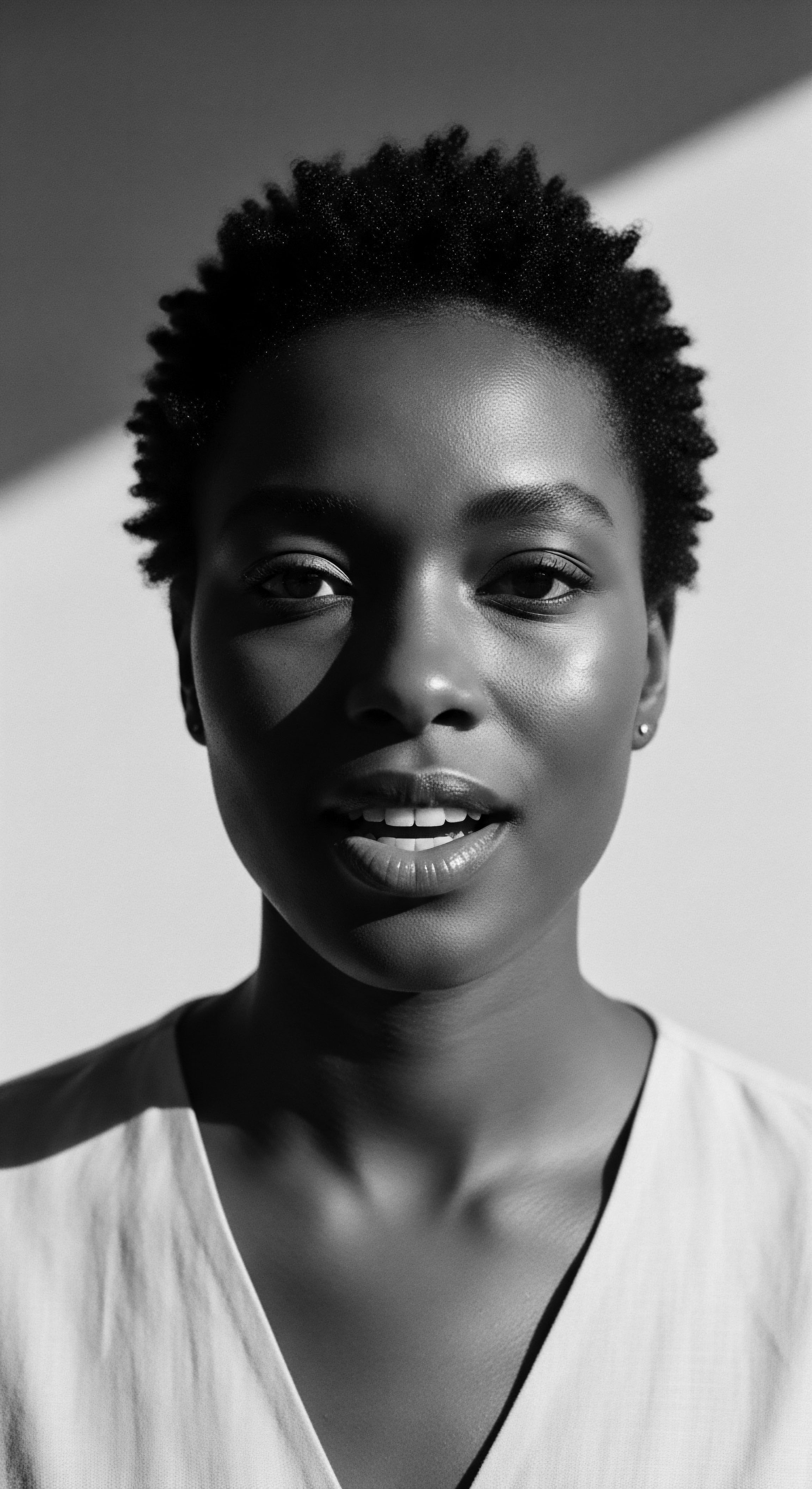
Ingredient Deep Dives from Ancestry to Present
The array of ingredients used traditionally for textured hair’s oil needs reflects a profound botanical knowledge.
- Shea Butter (Butyrospermum Parkii) ❉ Sourced from the shea tree, native to West Africa. Its rich fatty acid profile provides deep moisture and acts as a sealant. Used for centuries to protect hair from dry climates and sunlight.
- Coconut Oil (Cocos Nucifera) ❉ Highly prevalent in coastal African and Caribbean communities. Its unique molecular structure allows it to penetrate the hair shaft, reducing protein loss and providing internal nourishment.
- Castor Oil (Ricinus Communis) ❉ Widely used across the African diaspora, particularly the thick ‘Black’ castor oil variant from Jamaica. Known for its density, it provides a strong barrier against moisture loss and is traditionally applied to the scalp for perceived growth benefits.
- Olive Oil (Olea Europaea) ❉ Present in North African and Mediterranean hair traditions. Its emollient properties and antioxidants help condition and protect the hair.
These ingredients were not simply applied; they were often blended, sometimes heated, and occasionally infused with herbs for added medicinal or aromatic properties. The knowledge of which oil suited which hair condition, which oil paired well with a particular herb, was transmitted through oral tradition, a living pharmacy passed from one generation to the next.

Holistic Influences on Hair Health
The traditional approach to hair care was always holistic, extending beyond topical applications to encompass diet, spiritual well-being, and community. What traditional methods supported textured hair’s unique oil needs? It was never isolated; it was part of a larger ecosystem of care.
Nutrition, particularly diets rich in healthy fats, fresh produce, and lean proteins, played a recognized role in overall health, which in turn reflected in the vibrancy of one’s hair. Oils consumed internally, such as palm oil in West African diets, contributed to the body’s lipid balance, indirectly benefiting hair health from within.
The communal aspect of hair dressing, where women gathered to plait and oil each other’s hair, served as a crucial support system. These were spaces for bonding, storytelling, and the transmission of knowledge. The act of caring for another’s hair, sharing the tactile experience of oils, was deeply social. This collective practice underscored that hair health was not merely an individual pursuit but a communal responsibility and a shared heritage.
This intangible dimension of care, the supportive environment, is as much a part of the ‘traditional methods’ as any specific oil or technique. It is this intergenerational transfer of wisdom, this continuous relay, that truly defines the heritage of textured hair care.
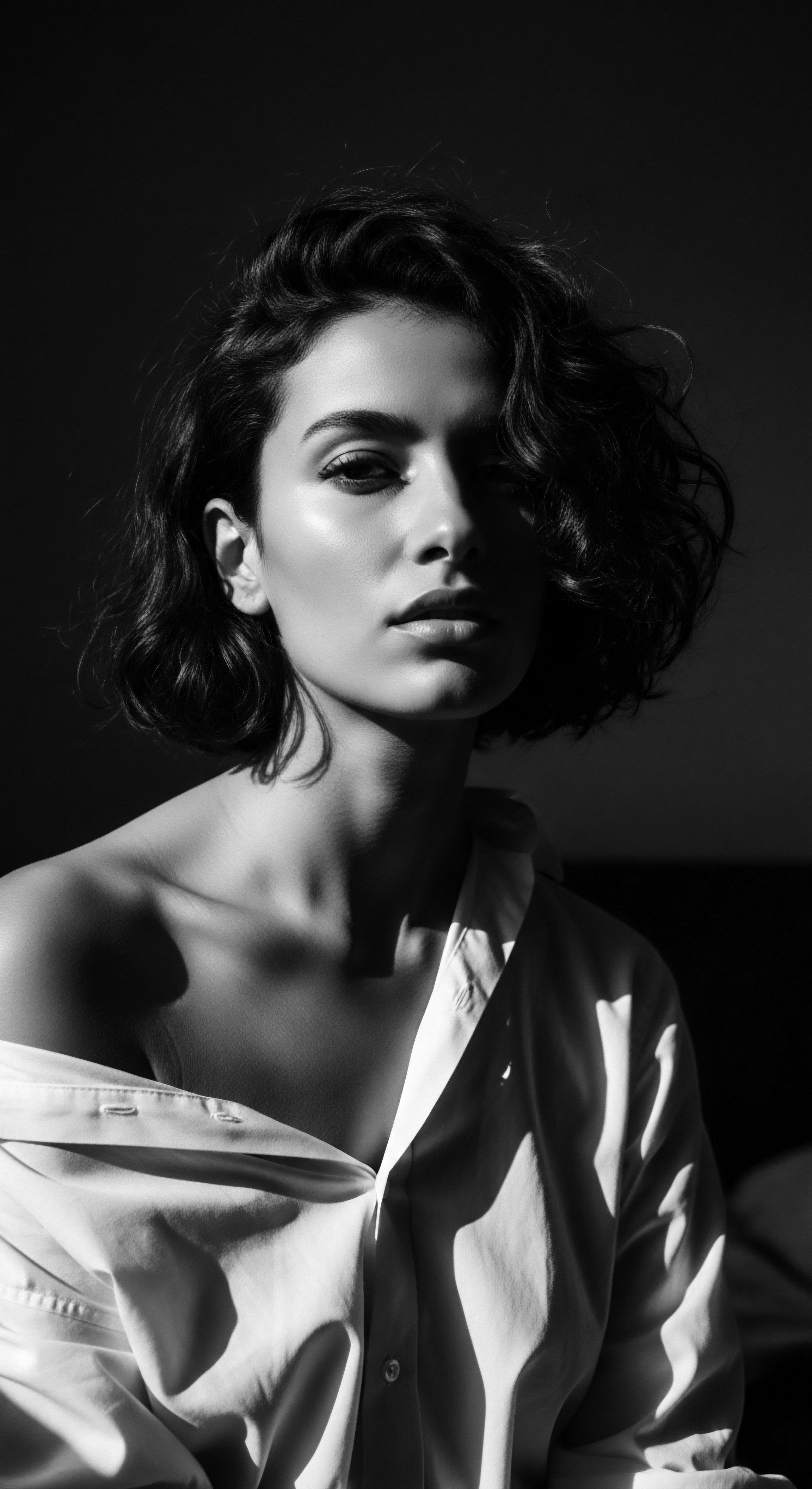
Reflection
The journey through the ancestral practices that supported textured hair’s unique oil needs reveals a profound wisdom, an enduring legacy that resonates deeply within the ‘Soul of a Strand’ ethos. Our exploration peels back layers of time, uncovering not just methods, but a philosophy of care born from deep observation, communal spirit, and an intuitive understanding of the natural world. This heritage is far from a relic; it is a living, breathing archive, continuously informing and enriching our contemporary relationship with textured hair.
The oils, the hands that applied them, the rituals that enveloped them — these elements speak to a truth both simple and profound ❉ that true care for textured hair is a conversation with history, a dialogue with resilience. The very act of oiling, of tending to the inherent thirst of coily strands, connects us to a continuous lineage of ancestors who understood that hair was more than adornment; it was identity, a shield, a conduit for stories. As we continue to seek balance and vitality for our hair, we find that the answers often lie not in fleeting trends, but in the enduring wisdom passed down through time.
This ongoing interaction with our hair, informed by ancestral practices, reinforces a sense of belonging and self-acceptance. It is a quiet act of defiance against narratives that have, at times, sought to diminish the natural glory of textured hair. By recognizing and honoring the traditional methods that nourished our strands, we affirm a heritage of beauty, strength, and ingenuity that continues to inspire. The rhythm of oiling, the warmth of the touch, the very scent of botanicals – these are echoes from the source, guiding us towards a future rooted in reverence for our unique strands.

References
- Ndibi, N. E. (2017). Ethnobotanical Survey of Medicinal Plants Used for Hair and Skin Care in Buea, Cameroon. Journal of Medicinal Plants Research, 11(15), 295-303.
- Byrd, A. & Tharps, L. D. (2001). Hair Story ❉ Untangling the Roots of Black Hair in America. St. Martin’s Press.
- Mercado, R. (2014). Ancient Hair Care and Adornment in Nubia ❉ Evidence from Kerma and Meroe. The Journal of the American Research Center in Egypt, 50, 165-179.
- Harris, D. (2019). Afro-textured Hair ❉ A Cultural and Scientific History. Bloomsbury Publishing.
- Gordon, A. (2009). The African Diaspora ❉ African Origins and New World Identities. Pearson Prentice Hall.
- Hall, S. (1990). Cultural Identity and Diaspora. In J. Rutherford (Ed.), Identity ❉ Community, Culture, Difference. Lawrence & Wishart.
